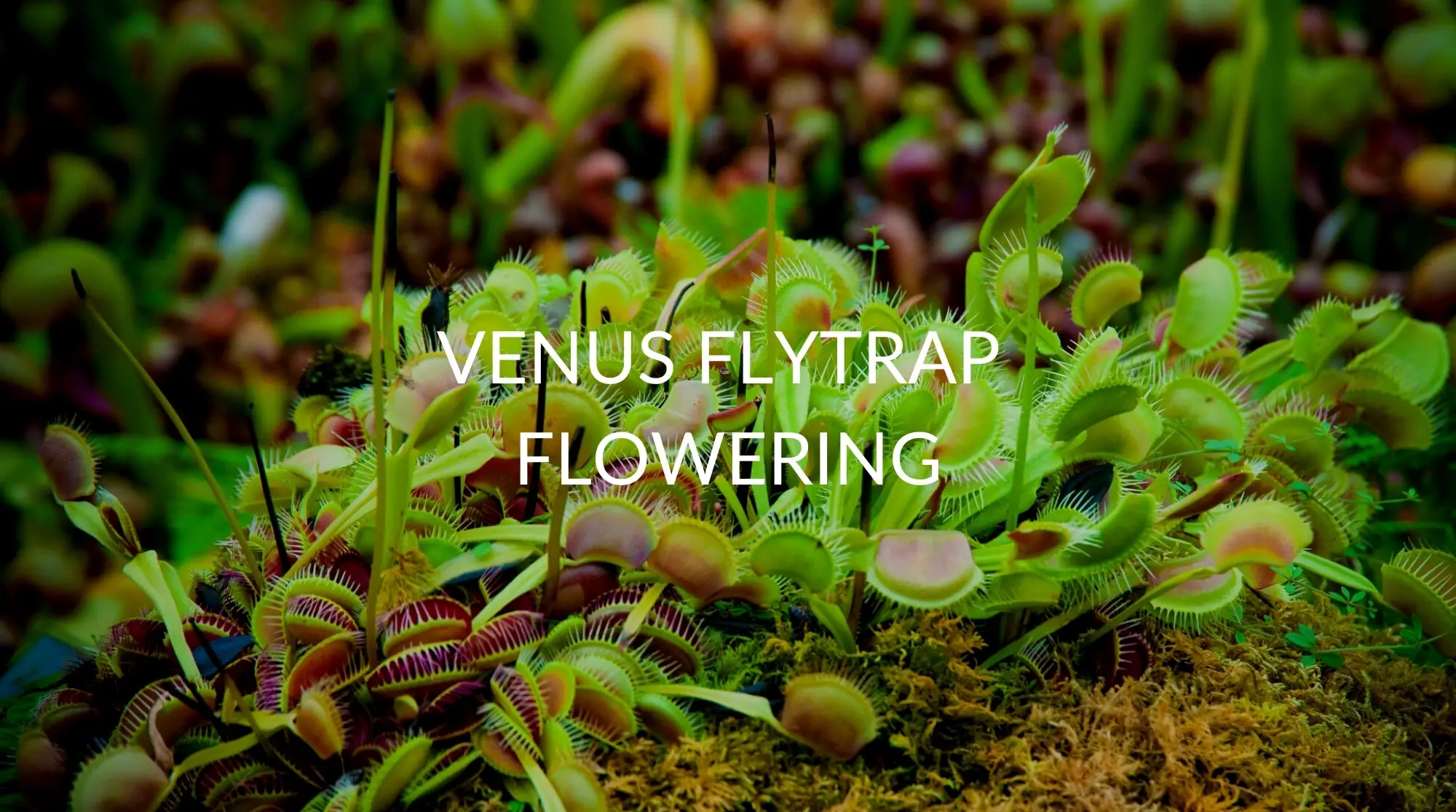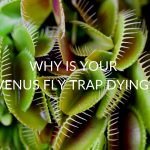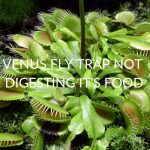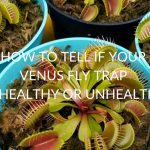If you’ve had your venus flytrap for some time, then it’s more than likely it will flower at some point soon. And if you’ve read up on venus fly trap, then you know that flowering can often be disastrous for them! However, is this always the case? and what should you do if you notice your Venus flytrap is starting to flower. In this article, not only will you find out the answer to these two questions, but you’ll also find out much, much more.
So keep reading to find out everything you want to know!
Should You Let Your Venus Flytrap Flower?
If you’re a novice when it comes to keeping venus flytraps, then you should definitely avoid letting your Venus flytrap flower! In fact, because Venus flytraps don’t do so well indoors (compared to their wild counterparts), it can take them a full year to recover from blooming! And if you don’t know exactly what you’re doing, they could end up dying!
Why Is Your Venus Fly Trap Flowering?
Your venus flytrap will flower because it’s trying to reproduce. The flower grows so high above the rest of the plant to make sure that any insect that pollinates the flower doesn’t end up being eaten by the other leaves.
So When Should You Stop The Flowering Process?
The best time to stop the flowering process in your Venus flytrap is when the stalk is about 5cm tall. This way, you’re going to cut it off without the plant expending too much energy while simultaneously reducing the chances of damaging your plant.
Likewise, if you notice other stalks starting to grow afterward, you should cut them off as well.
When Is It Too Late To Remove The Stalk?
There are times when there’s no point removing the stalk, and that’s when the plant is too far through the flowering process. For example, if the plant has already produced a flower bud, then all the hard work has already been done. So you might as well enjoy your Venus flytraps flower!
While you can cut it off to reduce any more energy expenditure, the expenditure is going to be minimal regardless!
How Do You Cut Venus Flytrap Flowers Off?
To cut the flower off your Venus flytrap, you’re going to need to remove the stalk. To remove the stalk, use a pair of scissors to cut from the very bottom. Make sure that you’re removing as much of the stem as possible while avoiding harming any other leaves around the plant.
And remember, it’s likely your Venus flytrap will produce multiple stalks throughout the year, so you’ll need to keep an eye on them and cut them off while they’re still short.
How Can You Tell Your Venus Fly Trap Is Going To Flower?
The main way you’re going to be able to tell that your Venus flytrap is about to flower is when you notice the stalk growing out of the center of the plant. You may have to look at the leaves, as the stalk and the leaves tend to grow side by side with each other. However, the stalk will look a lot more long, thin, and cylindrical.
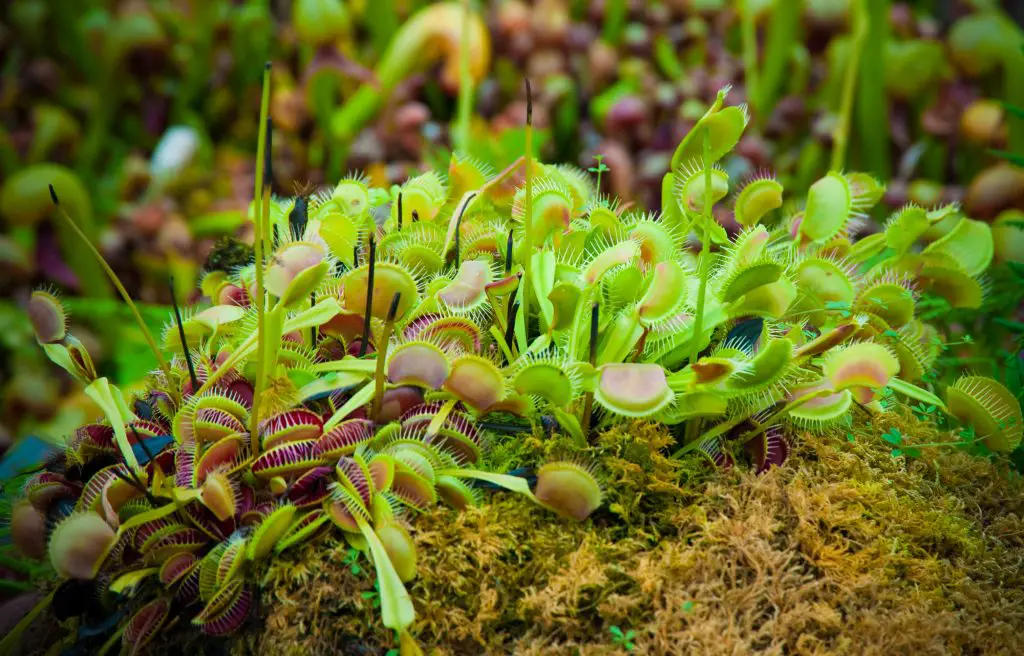
What To Do With Venus Flytrap Flowers?
If your venus flytrap has flowered, then you may be surprised to know that removing the flower isn’t the only option. In fact, they could be a lot more useful to you! Here are a couple of things you can try doing with your newly acquired flower!
Try Harvesting Seeds
The first thing you can do if you notice your venus flytrap has flowered is to try and harvest seeds from it. And the best part is that Venus flytraps are self-pollinating, so you can harvest seeds if you only have one!
How To Harvest Seeds From Your Venus Flytrap
If you plan on harvesting seeds from your Venus flytrap, then you should do the following!
- First of all, it’s important to know for the greatest chances of success, you should let your Venus flytrap bloom as many flowers as possible
- To pollinate your flower you’ll need to transfer the pollen from the anther of the flower (the small parts of the flower that stick out between the petals) to the stigma of the flower (the very middle of the flower.
- To do this you should use something delicate that can mimic natural pollinators (such as a Q-tip or a paintbrush).
- Once you’ve pollinated one flower, carefully pollinate all the rest as well. Remember, the more flowers you have to pollinate, the more likely it is some of them will produce seeds.
After you’ve pollinated your Venus flytrap, you’ll notice the following will happen:
- After a couple of days you’ll begin to notice that the flower has begun to wither, and dry out.
- With time the flower will die, but the flower itself will turn into a capsule which holds all the seeds.
- Once this happens, you’ll need to carefully open the flower and remove the seeds. Just remember, the seeds are going to be incredibly small and you can lose them easily, so you should be extra careful when extracting them.
Once you’ve done this, you can do what you wish with the seeds! If you plan on growing more Venus flytraps, then add the seeds to carnivorous plant soil, fill a tray with distilled water and place it under your containers, and then keep it a room temperature in sunlight and somewhere humid. After 6-8 weeks, you should notice the seeds have begun to germinate.
And one last tip, if you have more than one Venus flytrap blooming at the same time, it’s best to cross-pollinate them to produce stronger seeds.
Propagating Your Venus Flytrap
As well as trying to harvest seeds from your Venus flytraps flowers, you can also try propagating them as well! And the best part is you don’t even need the flower itself to do this; you just need to make sure that the flower stalks have grown to a good size.
How To Propagate A Venus Flytrap
If you want to propagate your Venus flytrap instead, then you’ll need to do the following:
- Get a pot and place a tray underneath it, then fill the pot with carnivorous plant soil, ensuring that you’re creating proper aeration and drainage.
- Once you’ve done this, the next step is to add distilled water to the soil until it’s been saturated completely.
- Now to make sure that the soil stays moist enough, you should fill the tray underneath with distilled water as well.
- Once all this is done, you should cut the stalk off the plant, trying to cut as close to the bulb as you possible can.
- Remember, from now on, whenever you’re watering your Venus flytrap, you should be watering them from the plate, and not on their soil itself.
- When the stalk is a reasonable size, you can now cut it it. To do this use a pair of extremely sharp scissors and cut as close to the bulb as possible.
- You now want to once again, cut the stalk into smaller pieces (about 3″ per piece is fine).
- Now it’s time to plant the stalk, and there are two ways you can do this. The first way is to bury about half an inch of the stalk into the soil, and the other way is to push press the stalk into the soil, and then cover both ends of the stalk with some soil!
What Is The Venus Flytrap Flowering Process?
Your venus flytrap will not flower until it’s about 2-4 years old. At this point, it’s going to start producing flowers. This normally occurs in the springtime after they’ve left their dormancy phase.
Once they’re ready to produce a flower, you’ll notice the stalk will begin to shoot up from the center of the plant. Oftentimes, you’ll even notice multiple stalks beginning to rise from your plant during the same time frame!
The flower itself is white, with green veins running through the petals. It isn’t particularly impressive when you compare it to a lot of other plants; however, they’re definitely unique and a surprise the first time you see them!
FAQ
Here are some more commonly asked questions about Venus Flytrap flowers!
When Do Venus Flytraps Flower
Venus flytraps tend to flower in the springtime after they’ve come out of dormancy. However, it’s important to note they’ll also only flower when they’ve reached maturity (which is after 2-4 years).
Are Venus Flytraps Self Pollinating
Venus flytraps are able to self-pollinate; however, if you’re going to try and breed them, it’s best to cross-pollinate them with seeds from another healthy plant.
Recap
As you can see, your Venus flytrap flowering doesn’t have to be troubling, but unless you’re experienced at taking care of them, you should definitely cut the stalk off early to prevent your flytrap from becoming too weak.
If you liked this article, make sure you check out the rest of the website! Otherwise, have a great day!

